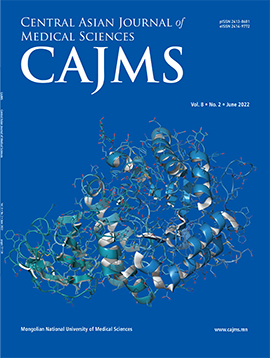Organization of Post-Stroke Rehabilitation Services: Changes between 2013 and 2018 in Services Provided by Health System in Mongolia
DOI:
https://doi.org/10.24079/cajms.2019.06.005Keywords:
Stroke Care, Rehabilitation, World Health Organization, Stroke Guideline, DisabilityAbstract
Objectives: Stroke related disabilities significantly decrease patients’ quality of life and post-stroke rehabilitation service is essential. Therefore, we studied post-stroke rehabilitation services and facilities provided in Mongolia between 2013 and 2018. Methods: A longitudinal study was performed in a total of 47 Mongolian hospitals that provide stroke rehabilitation services. A questionnaire regarding the organizational structure of rehabilitation units, equipment used, human resources, and adherence to recommended guidelines was developed and administered to specialists in these hospitals. Results: We recruited 47 (89%) out of 50 and 47 (94%) out of 53 hospitals delivering stroke rehabilitation service in 2013 and 2018 respectively. 25-34% of these hospitals provided post-stroke rehabilitation, with the majority being incapable of providing multidisciplinary team rehabilitation. The number of physiatrists and physical therapists increased significantly from 2013 to 2018 (p<.001) although the number of physical (p<.002) and occupational therapists (p<.001) was significantly lower in the rural areas. Utilization of Functional independence measures, namely, the Barthel index and modified Rankin scales were increased in 2018 compared to 2013. Conclusion: The majority of post-stroke rehabilitation services are not improved since 2013. Consistent national programs and policies are required to provide adherence to post-stroke rehabilitation guideline recommendations and implementation in clinical practice.
Downloads
192
Downloads
Published
How to Cite
Issue
Section
License
Copyright (c) 2019 Mongolian National University of Medical Sciences

This work is licensed under a Creative Commons Attribution-NonCommercial 4.0 International License.




